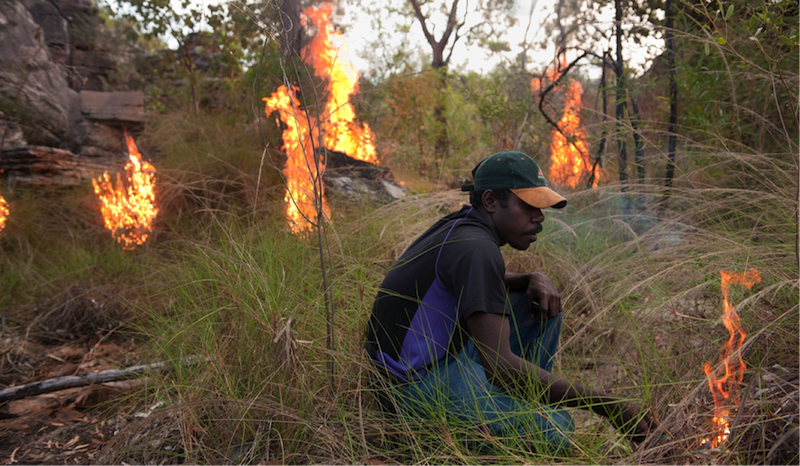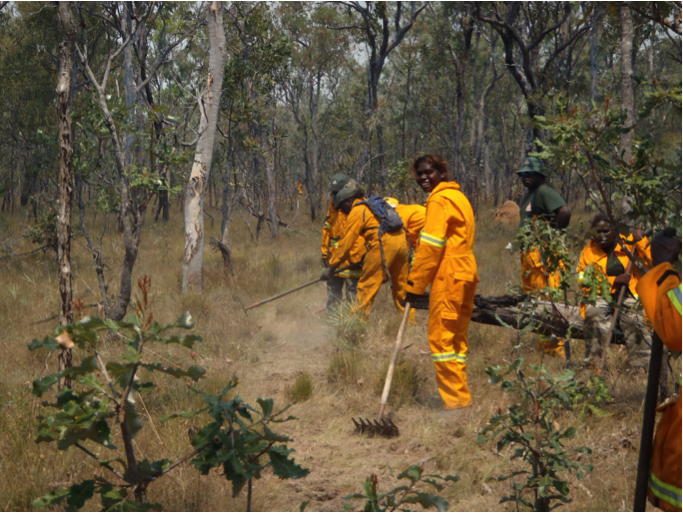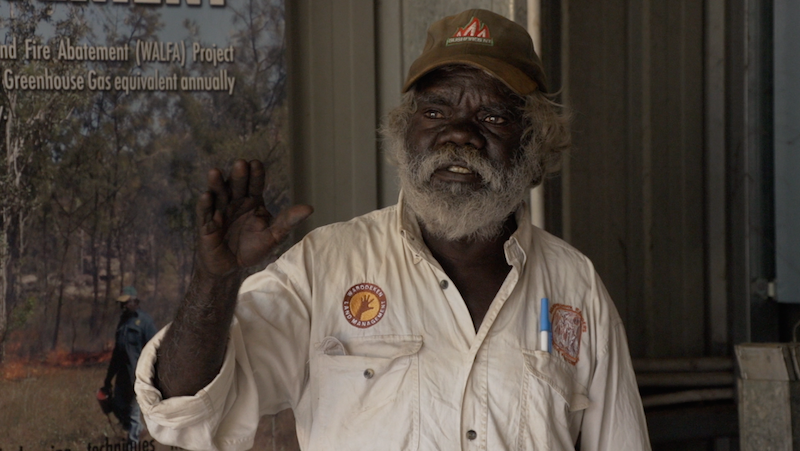- Australian’s indigenous communities traditionally managed land through low-intensity burning, which helped prevent larger fires later on.
- But Eurocentric land management, proscribing fire at all costs, was based on a belief that newly settled territories were wild places where the first people exercised no custodianship over nature. This, say researchers, allowed flammable vegetation to build up and fuel catastrophic wildfires that release significant amounts of greenhouse gases.
- Australia has started programs that encourage low-intensity burning to prevent big fires and reduce emissions, while enhancing biodiversity and improving livelihoods. Some say this practice could be used in other countries to help achieve emissions reductions targets.
- This post is a commentary – the views expressed are those of the author.
Fire is bad and needs to be stopped at all costs. That is the attitude European administrators brought to colonized lands stretching from Africa to Latin America and Australia during past centuries. This Eurocentric principle of land management, proscribing fire at all costs, was based on a belief that newly settled territories were wild places where the first people exercised no custodianship over nature.
It is now acknowledged, however, that many indigenous people lit fires regularly as part of a sophisticated relationship with the land that helped nurture their future supply of food resources and encouraged biodiversity. Growing concern about climate change has recently added impetus to moves reintroducing traditional people’s knowledge of fire to improve current land management.
Australia, home to the oldest living cultural history, is at the forefront of such moves. Innovative methods of land management that both protect the environment and reduce greenhouse gas emissions have been developed in Australia’s sparsely populated northern regions. Aboriginal communities are now earning financial credits for reduced emissions by following traditional practices, established through countless generations of early-season burning.

Before the arrival of European settlers, Aboriginal people regularly travelled through the bush lighting low-intensity fires to prevent the accumulation of dense ground vegetation. If left untended, the build up of this organic material would set off destructive wildfires sweeping through vast areas later in the year, sparked by natural fire starters such as lightning. The introduction of European farming techniques and the displacement of Aboriginal communities dislodged the role of early-season, low-intensity burning to rejuvenate the land.
Fighting fire with fire like the ancestors
Only in recent times has the value of Aboriginal early-season burning practices come to be appreciated. This is especially the case in Australia’s far north, where sparse human habitation has meant that wildfires have regularly ravaged the landscape. A number of northern Aboriginal communities have now reintroduced early burning based on ancient knowledge. This has then allowed them to reap financial benefit from lowering emissions – both through government-accredited funding and through offset payments by corporations. The positive synergy of old and new thinking is backed by years of scientific research showing how early-season burning leads to the substantial reduction of emissions.
The United Nations University (UNU), backed by Australian Government ODA funds, has been exploring whether Australia’s emission reduction model can be applied in other countries. This is because many other countries share environmental similarities to the northern savanna lands of Australia. While many people think of savannas as vast African plains populated by elephants and giraffes, savannas – according to their biological definition as grasslands with scattered trees – are common throughout many tropical regions in Australia, Latin America and Asia.
Sam Johnston of the UNU believes there is real potential for other countries to adopt similar methods of early burning used by Australian Aboriginal groups to reduce emissions and earn greenhouse gas abatement credits, while enhancing biodiversity and improving livelihoods.
“Currently, savanna fires are responsible for approximately 35 percent of the globe’s annual methane (CH4) emissions and 60 percent of annual nitrous oxide (N20) emissions from fire,” said Sam Johnston, the head of UNU’s traditional knowledge research.
“While both gases are less prevalent than carbon dioxide (CO2) they are far more potent. Methane produces about 21 times as much warming as carbon dioxide, while nitrous oxide is 300 times more effective at trapping heat,” he said. “Studies in Australia show the management of savanna through early burning can reduce methane and nitrous oxide emissions by more than 30 percent.”
Can other countries adopt Australia’s fire model?
During the past two years, the UNU has brought together land management experts and representatives of indigenous communities from a variety of countries at a series of workshops and on-site learning exchanges in northern Australia, Namibia and Kupang in eastern Indonesia. Regional studies have singled out a number of sites throughout the world where Australia’s model of fire management combining emission abatement financing looks particularly attractive. These areas include those located in Timor Leste and eastern Indonesia in Asia, Namibia and Zambia in Africa; and Brazil, Venezuela and Belize in Latin America.


Johnston said that while the initial prospects appear good, considerable research on the ground will be needed to test whether the Australian model offers a form of land management that in other country contexts can be funded by emissions offsets, and, if not, what other approaches might also be possible. A key to Australia’s model of savanna fire management is the ability it provides often isolated Aboriginal communities to earn emission offset credits financial incentives that allow local people to manage the lands of their ancestors.
Where traditional occupants of the land once walked through the country lighting managed fires on foot, now such age-old approaches are being combined with dropping firelighters from helicopters. Traditional knowledge, however, still plays a big part in terms of choosing the right weather conditions, soil types and the strategic use of streams and rocky outcrops to prevent fires getting out of control.
“I remember when I was a kid I used to go out bush with the adults and burn for hunting and to start regrowth,” said Cissy Gore-Birch of the Balangarra people, one of the four North Kimberley groups in Western Australia’s most northerly regions has been carrying out savanna fire management.
“People had traditional knowledge so they would know what days were good for burning. They didn’t think what they were doing was environmental management, it was just part of their everyday lives.”
Gore-Birch said gradually, however, as more people moved away from country and went to live in local towns, destructive fires ravaged the land and forced people to travel much further to hunt and find plants to eat.
“But over the last four years, since we reintroduced managed burning, there have been much less destructive hot fires. And also we are seeing more wildlife, such as emus, and bush tucker.”
The Balangarra woman said that while savanna fire management adds a welcome source of funding to local communities, it also spreads elders’ knowledge about early-season burning to young people, who have grown up without such intimate understanding of their ancestral country.
The vast Kimberley region covers a geographic area of approximately 424,500 km2, almost twice the size of Australia’s State of Victoria. Half of the Kimberley’s estimated population of 35,000 people are Indigenous. The Kimberley Land Council (KLC) is bringing new thinking to the perennial issue of how to promote Aboriginal empowerment. It is at the forefront of moves to unlock the key of using payments through emission abatement to reintroduce traditional fire management.
In early 2014, the KLC began to help local Indigenous groups register carbon abatement businesses. Its four savanna fire management projects, Australia’s only carbon projects entirely owned and operated by native title holders, have already abated greenhouse gases equivalent to over 300,000 metric tons of carbon dioxide. They have been earning carbon credits under the Australian Government’s Emissions Reduction Fund, a voluntary funding scheme that pays individuals and organization to reduce emissions.


While the social and environmental benefits of savanna burning are self-evident, funding provides the main challenge facing the diffusion of this innovative emission abatement model both within Australia and to the rest of the world. Similar to other land-based emission abatement schemes, such as Reducing Emissions from Deforestation and forest Degradation (REDD+), funding options are currently limited.
Tapping corporate responsibility
The emergence of a consolidated and well-resourced global carbon market appears unlikely, at least in the near term. So indigenous groups, such as the KLC, need to be creative in looking further afield to keep its Aboriginal land managers on country. This is especially so as Australian Government coffers to pay for emission reductions are limited under the ERF. KLC promoted the benefits of savanna fire management at an international business roundtable in December on the sidelines of the UN climate change meeting in Paris. The meeting, chaired by Australia’s Environment Minister Greg Hunt, was designed to drum up business interest in funding future savanna fire management projects.
Imaginative mitigation schemes like savanna fire management are likely to receive a fillip from the widely lauded outcome of the Paris meeting where 195 countries agreed to ratchet up climate action. For groups like the KLC, however, funding constraints mean there is no time to wait for the pondering progress of international agreements.
That is why it is seeking out business interest now. The KLC already can already look to another Aboriginal organisation on the other side of Australia to see how it is possible to bring the financial resources of multinational companies to bear. The West Arnhem Land Fire Abatement (WALFA) project in the Northern Territory is currently using carbon credits from savanna fire management to employ many local people.
In 2006, U.S. oil and natural gas company Conoco Phillips agreed to provide $17 million over 17 years to buy abatement from early savanna burning conducted by indigenous groups on indigenous-held lands as an environmental requirement linked to opening a liquefied natural gas plant in Darwin.
It is hoped that similar arrangements tapping into international resource companies’ Corporate Social Responsibility (CSR) obligations and goals can be achieved in other parts of Australia and the world. As Australia’s Indigenous groups continue to forge new paths of abatement, fire management is likely to remain a burning question for those wishing to stop a warming world while bringing ancient knowledge back into the light.
Catherine Monagle is a program manager and Senior Fellow with the Traditional Knowledge Initiative of the UNU Institute for the Advanced Study of Sustainability (UNU-IAS).
